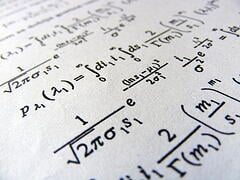Math is a subject that most students either love or hate. In either case, preparing thoroughly for the Math section of the ACT is important in order to do your best. If...
ACT Math Strategy Series [Part 3 of 3]
 Math is a subject that most students either love or hate. In either case, preparing thoroughly for the Math section of the ACT is important in order to do your best. If math is not your strongest subject, building a solid foundation of understanding will be important for maintaining a decent overall score. If math comes easily for you, reviewing will still be important in order to fill in the gaps in your knowledge, especially if you want your score to truly reflect your ability. Either way, this series of posts gives you valuable strategies that will help you maximize your score. This post is the third of a three part series that looks at strategies for acing the ACT Math section.
Math is a subject that most students either love or hate. In either case, preparing thoroughly for the Math section of the ACT is important in order to do your best. If math is not your strongest subject, building a solid foundation of understanding will be important for maintaining a decent overall score. If math comes easily for you, reviewing will still be important in order to fill in the gaps in your knowledge, especially if you want your score to truly reflect your ability. Either way, this series of posts gives you valuable strategies that will help you maximize your score. This post is the third of a three part series that looks at strategies for acing the ACT Math section.
Strategy #7: Recognize Obvious Shortcuts
Often problems that appear to involve laborious calculations will actually be quicker to answer if you recognize shortcuts. For example, 256/64 is obviously 4 if you know your powers of 2. Other problems might be quicker to solve if you merely approximate the answer, which may get you close enough to recognize the correct answer from among the given choices. The more you practice with the specific types of problems that show up on the ACT, the more easily you will be able to recognize shortcuts when they are available (and the less likely you will be to waste time looking for them when they don’t exist).
Strategy #8: Check Obvious Answers
It doesn’t hurt to glance at the answer choices before attempting to solve a problem and check for any that appear to be obviously correct or obviously incorrect. Of course, if an answer choice appears to be obviously correct you should still verify it for yourself, as well as confirm that the other choices are not correct. Conversely, if an answer is obviously incorrect, you can eliminate it, which can make it easier to identify the correct one.
Strategy #9: Use Strategic Guessing
On the ACT there is no penalty for guessing, so there is no reason to not answer every problem. Guessing works best if you can stack the odds in your favor by eliminating as many incorrect answer choices as possible. On some problems you may be able to guess and check. If the answer is a number, it makes sense to guess the middle one first, because if it doesn’t work you may be able to tell if you need to go higher or lower. This will often be faster than starting at the highest number and going down or starting at the lowest number and going up.
Dane Dormio is an online tutor and blogger with an unconventional approach to education. Visit his tutoring blog at www.synergy-tutoring.com.

